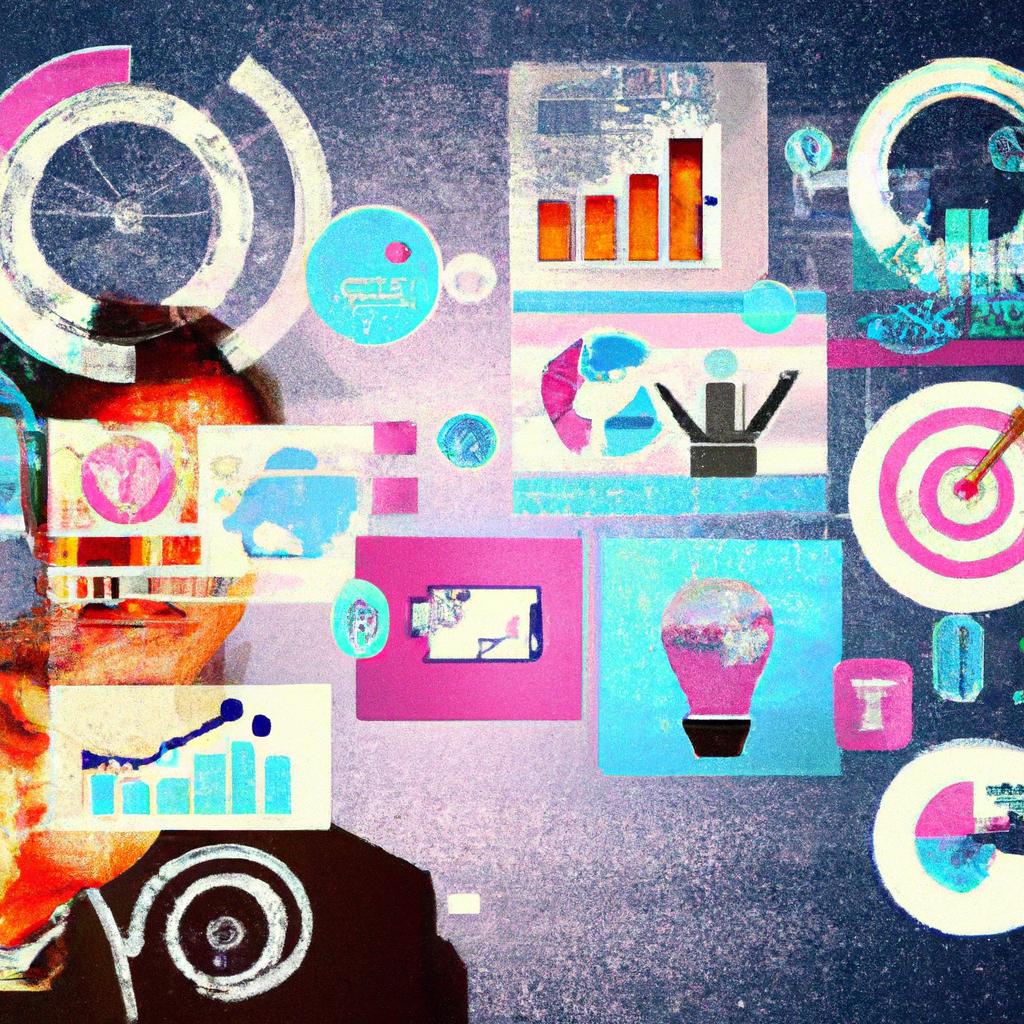
The Future of Marketing: Essential Trends & Predictions for Beginners
The world of marketing is like a fast-moving river – constantly changing, always flowing, and full of exciting new currents. What worked yesterday might not work tomorrow, and staying ahead of the curve is crucial for any business, big or small.
If you’re new to marketing, or just feeling a bit lost in the digital maze, don’t worry! This article will break down the most important trends and predictions shaping the future of marketing in a way that’s easy to understand. We’ll explore how technology, consumer behavior, and even global events are transforming how businesses connect with their customers.
Let’s dive into the exciting future of marketing!
Why is Marketing Changing So Much, So Fast?
Before we look at the future, let’s quickly understand why marketing is evolving at such a rapid pace. It boils down to a few key factors:
- Technology Explosion: From Artificial Intelligence (AI) to virtual reality, new technologies are constantly emerging, offering new ways to reach and engage customers.
- Shifting Consumer Behavior: People are more tech-savvy, more demanding, and more discerning than ever before. They expect personalized experiences, instant gratification, and transparency from brands.
- Data Overload: We have access to more data than ever, but knowing how to use it effectively is the real challenge.
- Global Connectivity: The internet has made the world a smaller place, opening up new markets but also increasing competition.
These factors create a dynamic environment where marketing strategies must adapt to survive and thrive.
Key Trends Shaping the Future of Marketing
Here are the top trends that will define how businesses market themselves in the coming years:
1. Artificial Intelligence (AI) & Machine Learning (ML) Become Your Marketing Sidekicks
Think of AI not as a robot taking over your job, but as a super-smart assistant that helps you do your job better and faster. Machine Learning is the part of AI that allows computers to "learn" from data without being explicitly programmed.
How AI & ML are Changing Marketing:
- Hyper-Personalization: AI can analyze vast amounts of data to understand individual customer preferences, allowing for truly tailored messages and product recommendations.
- Content Creation & Curation: AI tools can help generate ideas, write ad copy, social media posts, or even entire articles, saving time and sparking creativity.
- Automated Customer Service: Chatbots powered by AI can answer common customer questions 24/7, freeing up human agents for more complex issues.
- Predictive Analytics: AI can forecast future trends, helping marketers predict what customers might want next or which campaigns will perform best.
- Optimized Ad Spending: AI can analyze ad performance in real-time, automatically adjusting bids and targeting to get the most bang for your buck.
What This Means for You:
Embrace AI tools. Learn how to use them to automate repetitive tasks, understand your customers better, and create more effective campaigns.
2. Hyper-Personalization & Customer Experience (CX) Reign Supreme
In a noisy world, generic messages get ignored. Customers today expect brands to know them, understand their needs, and offer relevant experiences. This goes beyond just using their name in an email. It’s about tailoring the entire customer journey.
Key Aspects of Hyper-Personalization & CX:
- One-to-One Communication: Sending messages that are specific to an individual’s past behavior, preferences, and current needs.
- Seamless Journeys: Making sure a customer’s experience is smooth whether they are on your website, app, social media, or in a physical store.
- Proactive Problem Solving: Using data to anticipate customer issues and address them before they even arise.
- Emotional Connection: Building relationships by understanding customer feelings and offering empathetic support.
What This Means for You:
Focus on understanding your audience deeply. Use data to create personalized content and offers. Map out the customer journey and look for ways to make every touchpoint exceptional.
3. Data-Driven Marketing & Advanced Analytics Become Non-Negotiable
"Data" might sound intimidating, but it’s simply information. In marketing, it’s information about your customers, your campaigns, and your overall performance. The future of marketing relies on using this information wisely.
Why Data is Crucial:
- Informed Decisions: Instead of guessing, you can make decisions based on what the data tells you works best.
- Measuring ROI (Return on Investment): You can clearly see which marketing efforts are bringing in sales and which aren’t.
- Identifying Opportunities: Data can reveal new market segments, popular products, or untapped potential.
- Optimizing Campaigns: Real-time data allows you to tweak campaigns mid-flight for better results.
What This Means for You:
Learn the basics of marketing analytics. Understand metrics like website traffic, conversion rates, and engagement. Tools like Google Analytics are your friends!
4. Privacy & Trust: The New Currency
With growing concerns about data breaches and how personal information is used, customers are becoming very conscious about their privacy. Brands that prioritize transparency and ethical data practices will earn trust and loyalty.
Building Trust in a Digital Age:
- Transparency: Be clear about what data you collect and how you use it.
- Consent: Always get explicit permission before collecting or using customer data.
- Security: Protect customer data with robust security measures.
- Ethical AI Use: Ensure AI is used responsibly and doesn’t perpetuate biases.
- Valuing Privacy: Offer customers control over their data and respect their choices.
What This Means for You:
Understand privacy regulations (like GDPR or CCPA). Be honest and transparent with your customers about data. Trust is hard to earn and easy to lose.
5. Omnichannel & Seamless Experiences
"Omnichannel" isn’t just about being on every channel; it’s about making sure all your channels work together seamlessly to provide a consistent customer experience. Imagine a customer browsing your website, adding items to their cart, then walking into your physical store and being able to pick up exactly where they left off.
Elements of Omnichannel Marketing:
- Consistent Branding: Your brand voice, look, and feel should be the same across all platforms.
- Integrated Systems: Your customer service, sales, and marketing teams should have access to the same customer information.
- Personalized Journeys: Customers can switch between channels (e.g., social media, email, app, in-store) without losing context.
What This Means for You:
Think about the entire customer journey, not just individual touchpoints. Ensure your messaging and experience are consistent wherever a customer interacts with your brand.
6. The Evolution of Content Marketing (Video Dominance!)
Content marketing – creating valuable, relevant, and consistent content to attract and retain an audience – is not going anywhere. However, the type of content is shifting dramatically.
Key Content Trends:
- Video First: Short-form video (TikTok, Instagram Reels, YouTube Shorts) continues to explode, but long-form video (YouTube, webinars) remains powerful for deeper engagement.
- Interactive Content: Quizzes, polls, calculators, and augmented reality (AR) filters boost engagement and gather valuable data.
- Audio Content: Podcasts and audio articles are growing in popularity as people seek information on the go.
- Authenticity: Raw, unpolished, and relatable content often performs better than overly produced ads.
What This Means for You:
Embrace video! Experiment with different formats. Focus on providing real value to your audience, not just selling.
7. Influencer & Community Marketing Deepens
People trust recommendations from real people, especially those they admire or relate to. Influencer marketing, which leverages individuals with an audience, continues to evolve, focusing more on authenticity and long-term partnerships. Community marketing builds direct connections with your most loyal customers.
Shifts in Influencer & Community Marketing:
- Micro and Nano-Influencers: Brands are increasingly working with smaller influencers who have highly engaged, niche audiences.
- Employee Advocacy: Employees become brand ambassadors, sharing positive messages and insights.
- Brand Communities: Creating online or offline spaces where customers can connect with each other and the brand.
- User-Generated Content (UGC): Encouraging customers to create content about your brand, which builds trust and authenticity.
What This Means for You:
Identify authentic voices in your niche. Build genuine relationships with influencers. Create spaces where your customers can connect and share their experiences.
8. Social Commerce & Livestream Shopping Explode
Social media is no longer just for connecting; it’s a major shopping destination. Social commerce refers to the direct buying and selling of products within social media platforms. Livestream shopping combines live video with e-commerce, allowing viewers to purchase products shown in real-time.
Why It’s Growing:
- Convenience: Customers can discover and buy products without leaving their favorite social app.
- Engagement: Live streams create an interactive, entertaining shopping experience.
- Trust: Seeing products in action and getting immediate answers from sellers builds confidence.
What This Means for You:
Explore features like Instagram Shopping, Facebook Shops, and TikTok Shop. Consider experimenting with livestream events to showcase your products.
9. Sustainability & Purpose-Driven Marketing Become Mainstream
Consumers, especially younger generations (Gen Z and Millennials), are increasingly concerned about environmental and social issues. They want to support brands that align with their values and demonstrate a commitment to making a positive impact.
Elements of Purpose-Driven Marketing:
- Authenticity: Actions speak louder than words. Brands must genuinely commit to their stated purpose.
- Transparency: Be open about your supply chain, ethical practices, and sustainability efforts.
- Social Responsibility: Support causes, engage in ethical sourcing, and minimize environmental impact.
What This Means for You:
Identify your brand’s purpose beyond profit. Communicate your values authentically. Show, don’t just tell, your commitment to social and environmental responsibility.
10. Emerging Technologies (AR/VR, Metaverse, Voice Search) on the Horizon
While some of these are still in early stages, they hold immense potential for future marketing:
- Augmented Reality (AR): Overlays digital information onto the real world (e.g., IKEA’s app lets you see furniture in your room).
- Virtual Reality (VR) & The Metaverse: Immersive digital worlds where users can interact, socialize, and potentially shop in virtual spaces.
- Voice Search & Smart Speakers: Optimizing content for voice queries ("Hey Google, find me…") is becoming critical as more people use smart devices.
What This Means for You:
Stay curious! Keep an eye on these technologies. While you might not need to invest heavily today, understanding their potential will help you adapt when they become more mainstream.
Preparing Your Marketing for the Future: Actionable Steps for Beginners
Feeling overwhelmed? Don’t be! The future of marketing is about adaptation, learning, and putting the customer first. Here are some actionable steps you can take:
- Embrace a Learning Mindset: The biggest trend is constant change. Dedicate time to learning new tools, strategies, and technologies. Follow industry blogs, take online courses, and attend webinars.
- Become Data-Savvy (Even a Little Bit): You don’t need to be a data scientist, but understanding basic metrics and how to interpret them is essential. Start with Google Analytics.
- Prioritize the Customer Experience: Always ask: "How can I make this easier, more enjoyable, or more valuable for my customer?" Personalization and seamless journeys are key.
- Build Trust and Be Transparent: Honesty and ethical practices are your most valuable assets. Be open about your data policies and your brand’s values.
- Experiment with Video Content: You don’t need fancy equipment. Your smartphone is a powerful tool. Start with short, authentic videos on platforms like TikTok or Instagram Reels.
- Think "Omnichannel" from the Start: Even if you only have a website and social media, ensure your messaging and brand identity are consistent across both.
- Explore AI Tools (Don’t Be Afraid!): Try a free AI writing assistant or an AI-powered image generator. See how they can help streamline your tasks.
- Focus on Value, Not Just Sales: Great marketing provides solutions, entertainment, or education. When you provide value, sales often follow naturally.
Conclusion: The Exciting Journey Ahead
The future of marketing is dynamic, innovative, and deeply focused on the customer. While technology will continue to play a massive role, the core principles of understanding your audience, building trust, and delivering value will remain timeless.
By staying curious, embracing new tools, and always putting your customer at the heart of your strategy, you’ll be well-equipped to navigate the exciting currents of marketing’s future. It’s a journey of continuous learning, and it’s one that promises incredible opportunities for those ready to adapt.



Post Comment